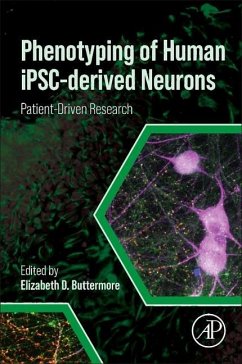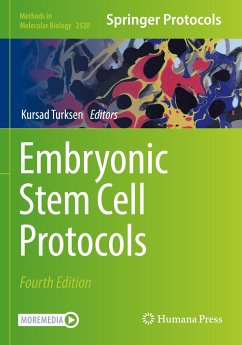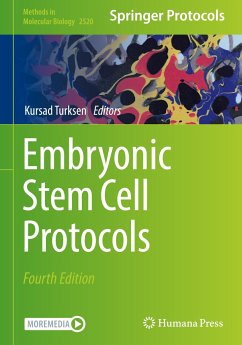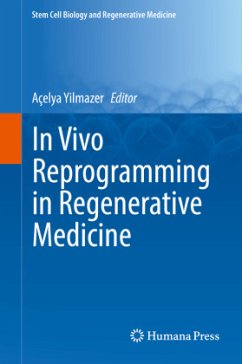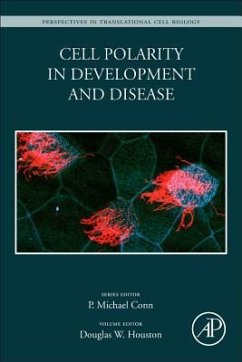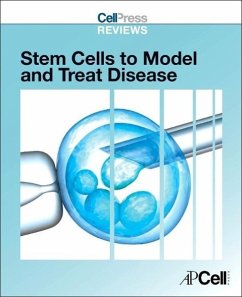
Molecular Basis of Developmental and Stem Cell Regulation
Classical Models Revised
Versandkostenfrei!
Versandfertig in 1-2 Wochen
100,99 €
inkl. MwSt.
Weitere Ausgaben:

PAYBACK Punkte
50 °P sammeln!
This book provides a comprehensive overview of the molecular basis of developmental and stem cell regulation. It revisits some of the classical models of developmental biology and puts them in context with the findings of modern stem cell research and developmental biology.Biomedical research is embarking on a new era due to new tools, which are exemplified by stem cell technologies, single-cell transcriptome analysis, and live imaging at a single-cell resolution. Publications based on cutting-edge technologies do often not provide the readers with deep biological backgrounds. This causes the ...
This book provides a comprehensive overview of the molecular basis of developmental and stem cell regulation. It revisits some of the classical models of developmental biology and puts them in context with the findings of modern stem cell research and developmental biology.
Biomedical research is embarking on a new era due to new tools, which are exemplified by stem cell technologies, single-cell transcriptome analysis, and live imaging at a single-cell resolution. Publications based on cutting-edge technologies do often not provide the readers with deep biological backgrounds. This causes the risk that precious data are reduced to highly specific descriptions without sufficient biological contexts.
Contemporary developmental biology on the other hand as written in many textbooks, is to a significant extent based on conceptions backdated many decades ago, and is not necessarily supported by recent findings. Yet, the prevailing classical notions tend to mislead modern biomedical researches.
This book not only presents current models for developmental processes but also reinterprets and re-evaluates classic observations, thus linking classical and modern worlds of developmental biology. Spanning from molecular mechanisms to highly embryological matters it provides a bridge between these different disciplines.
Written for advanced students of developmental and stem cell biology, researchers and teaching scholars, this book provides a new road map to modern developmental biology and stem cell biology.
Biomedical research is embarking on a new era due to new tools, which are exemplified by stem cell technologies, single-cell transcriptome analysis, and live imaging at a single-cell resolution. Publications based on cutting-edge technologies do often not provide the readers with deep biological backgrounds. This causes the risk that precious data are reduced to highly specific descriptions without sufficient biological contexts.
Contemporary developmental biology on the other hand as written in many textbooks, is to a significant extent based on conceptions backdated many decades ago, and is not necessarily supported by recent findings. Yet, the prevailing classical notions tend to mislead modern biomedical researches.
This book not only presents current models for developmental processes but also reinterprets and re-evaluates classic observations, thus linking classical and modern worlds of developmental biology. Spanning from molecular mechanisms to highly embryological matters it provides a bridge between these different disciplines.
Written for advanced students of developmental and stem cell biology, researchers and teaching scholars, this book provides a new road map to modern developmental biology and stem cell biology.





